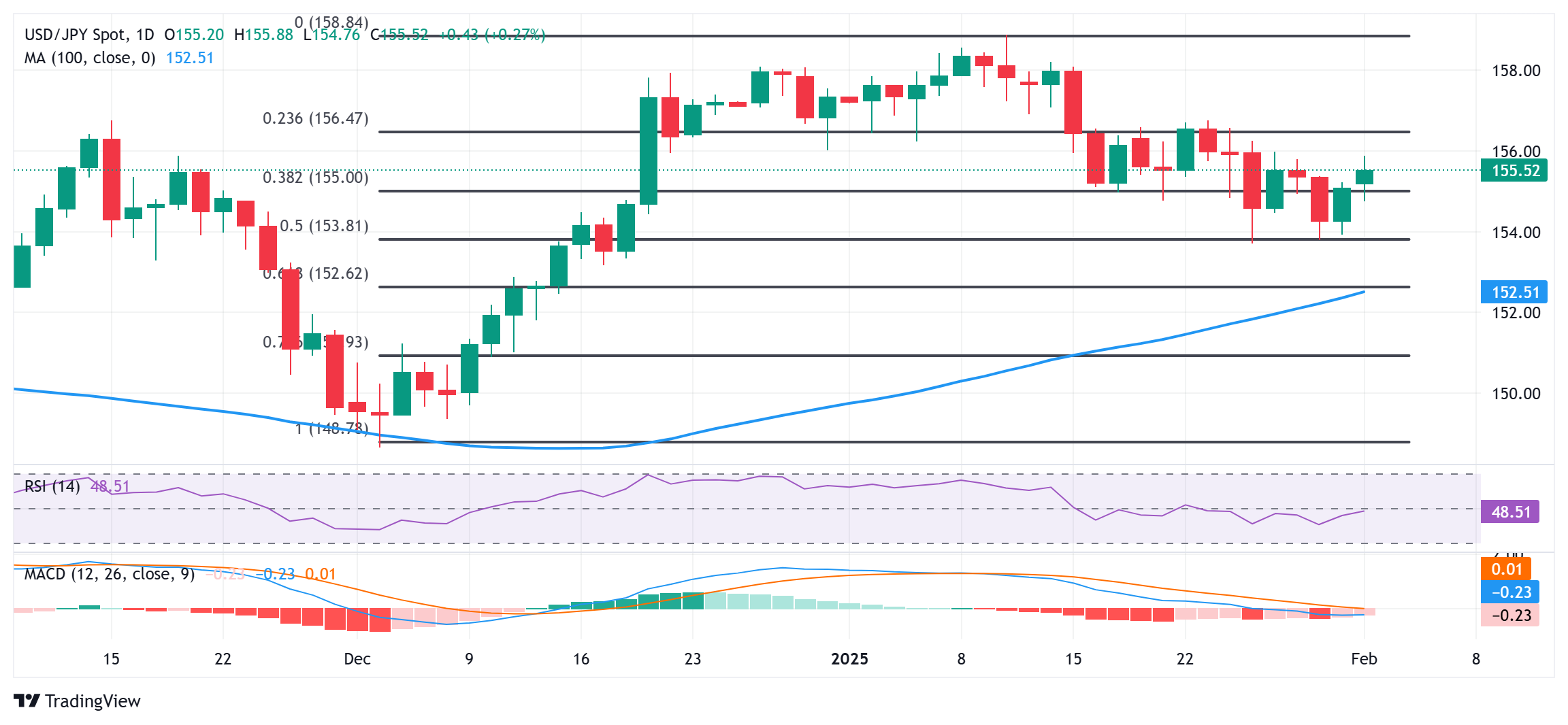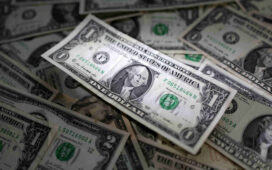- The Japanese Yen weakens further against USD amid concerns about Trump’s trade tariffs.
- Bets for more BoJ rate hikes and the risk-off mood could limit losses for the safe-haven JPY.
- The narrowing US-Japan rate differential might also contribute to cap the USD/JPY pair.
The Japanese Yen (JPY) remains depressed against its American counterpart for the second consecutive day on Monday and retreats further from over a one-month high touched last week. Concerns about the economic fallout from US President Donald Trump’s trade tariffs turn out to be a key factor that contributes to the JPY’s relative underperformance. The intraday JPY slide, however, remains cushioned amid growing acceptance that the Bank of Japan (BoJ) will hike interest rates again.
In fact, the BoJ Summary of Opinions showed that policymakers discussed the likelihood of raising interest rates further. This comes on top of a rise in Tokyo’s core inflation by the fastest annual pace in nearly a year and keeps hopes alive for further BoJ policy tightening. Adding to this, the narrowing interest rate differentials between Japan and the rest of the world, along with the risk-off impulse, could offer support to the safe-haven JPY and help limit any further depreciating move.
Japanese Yen bulls still have the upper hand amid bets for additional BoJ rate hikes
- US President Donald Trump signed an order on Saturday to impose 25% tariffs on Canadian and Mexican imports and 10% on goods from China starting on Tuesday.
- Canada’s Prime Minister Justin Trudeau, Mexico’s President Claudia Sheinbaum, and China’s foreign ministry were quick to respond with the upcoming tit-for-tat moves.
- The US Dollar rallies across the board and advances back closer to over a two-year high touched in January, which assists the USD/JPY pair to build on Friday’s move up.
- The Bank of Japan’s Summary of Opinions released earlier this Monday showed that policymakers discussed the likelihood of raising rates further at the January meeting.
- BoJ board members reiterated that it will be necessary to continue hiking rates, if economic activity and prices remain on track, though it does little to boost the Japanese Yen.
- Japan’s Finance Minister Katsunobu Kato said that the government intends to monitor the impact of Trump’s new tariffs on its currency amid worries about the fallout.
- The US-Japan yield differential hovers near a multi-week low. This, along with the risk-off impulse, could help limit a further JPY depreciation in the near term.
- Traders now look forward to this week’s important US macro releases scheduled at the start of a new month, starting with the ISM Manufacturing PMI later today.
- The focus, however, will remain glued to the US monthly employment data – popularly known as the Nonfarm Payrolls (NFP) report due for release on Friday.
USD/JPY needs to surpass 156.25, last week’s high to suppor prospects for further gains
From a technical perspective, last week’s goodish rebound from the 50% retracement level of the December-January rally and the subsequent move up favor bullish traders. That said, any further strength beyond the 156.00 mark might confront some hurdle near last week’s swing high, around the 156.25 area. A sustained strength beyond the said barrier could trigger a fresh bout of a short-covering rally and lift the USD/JPY pair to the 156.70-156.75 region en route to the 157.00 round figure and the 157.60 horizontal barrier. The momentum could extend further towards the 158.00 mark, above which spot prices could aim to retest the multi-month top, around the 158.85-158.90 region touched on January 10.
On the flip side, the 155.00 psychological mark now seems to protect the immediate downside ahead of the 154.55-154.50 horizontal zone and the 154.00 round figure. This is closely followed by the January monthly trough, around the 153.70 area touched last Monday. A convincing break below the latter would be seen as a fresh trigger for bearish traders and make the USD/JPY pair vulnerable to accelerate the fall further towards the 153.30 support. Spot prices could eventually drop to the 153.00 mark.
Japanese Yen FAQs
The Japanese Yen (JPY) is one of the world’s most traded currencies. Its value is broadly determined by the performance of the Japanese economy, but more specifically by the Bank of Japan’s policy, the differential between Japanese and US bond yields, or risk sentiment among traders, among other factors.
One of the Bank of Japan’s mandates is currency control, so its moves are key for the Yen. The BoJ has directly intervened in currency markets sometimes, generally to lower the value of the Yen, although it refrains from doing it often due to political concerns of its main trading partners. The BoJ ultra-loose monetary policy between 2013 and 2024 caused the Yen to depreciate against its main currency peers due to an increasing policy divergence between the Bank of Japan and other main central banks. More recently, the gradually unwinding of this ultra-loose policy has given some support to the Yen.
Over the last decade, the BoJ’s stance of sticking to ultra-loose monetary policy has led to a widening policy divergence with other central banks, particularly with the US Federal Reserve. This supported a widening of the differential between the 10-year US and Japanese bonds, which favored the US Dollar against the Japanese Yen. The BoJ decision in 2024 to gradually abandon the ultra-loose policy, coupled with interest-rate cuts in other major central banks, is narrowing this differential.
The Japanese Yen is often seen as a safe-haven investment. This means that in times of market stress, investors are more likely to put their money in the Japanese currency due to its supposed reliability and stability. Turbulent times are likely to strengthen the Yen’s value against other currencies seen as more risky to invest in.
Tariffs FAQs
Tariffs are customs duties levied on certain merchandise imports or a category of products. Tariffs are designed to help local producers and manufacturers be more competitive in the market by providing a price advantage over similar goods that can be imported. Tariffs are widely used as tools of protectionism, along with trade barriers and import quotas.
Although tariffs and taxes both generate government revenue to fund public goods and services, they have several distinctions. Tariffs are prepaid at the port of entry, while taxes are paid at the time of purchase. Taxes are imposed on individual taxpayers and businesses, while tariffs are paid by importers.
There are two schools of thought among economists regarding the usage of tariffs. While some argue that tariffs are necessary to protect domestic industries and address trade imbalances, others see them as a harmful tool that could potentially drive prices higher over the long term and lead to a damaging trade war by encouraging tit-for-tat tariffs.
During the run-up to the presidential election in November 2024, Donald Trump made it clear that he intends to use tariffs to support the US economy and American producers. In 2024, Mexico, China and Canada accounted for 42% of total US imports. In this period, Mexico stood out as the top exporter with $466.6 billion, according to the US Census Bureau. Hence, Trump wants to focus on these three nations when imposing tariffs. He also plans to use the revenue generated through tariffs to lower personal income taxes.





